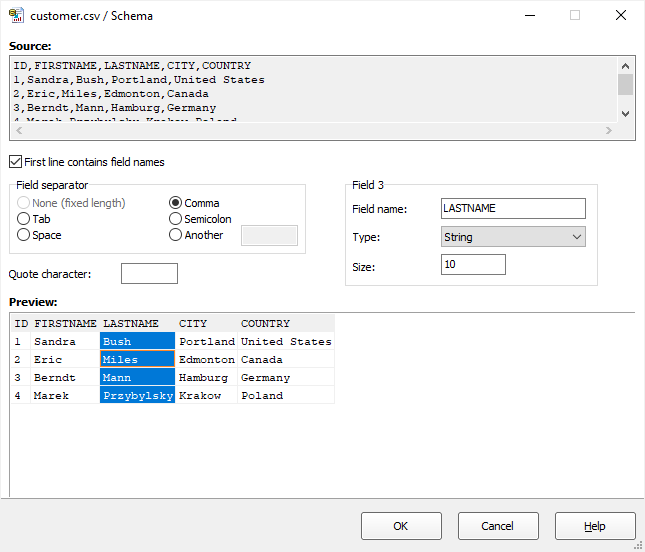If you use text or CSV files (i.e. text tables) as report data sources, it makes sense to have a schema for each such table. The schema describes the fields and some other attributes of the table
Sometimes, the application can correctly recognize the fields even without schema (e.g. when the files uses a standard field separator like a comma etc.), but schema helps to recognize them faster and sometimes can even reduce the operating memory usage when opening the table for data browsing.
Reportizer has the graphical interface, which can help you to create schemas in a few clicks:

This interface is invoked after the user's confirmation when the user creates a new report based on a text table, or changes the data source for existing report. The confirmation appears where the corresponding environment option is set.
If you work with text tables via ADO, the schema is placed in a Schema.ini file, which is the common schema file for all text tables in a folder.
If you work with text tables via old BDE, the schema is placed in a separate file with the same name as the data file, but with .SCH extension.
Anyway, you can create a schema manually using any text editor. The documentation on creating text schemas can be found in the internet, or you can figure it out looking into the schema files created by Reportizer.

